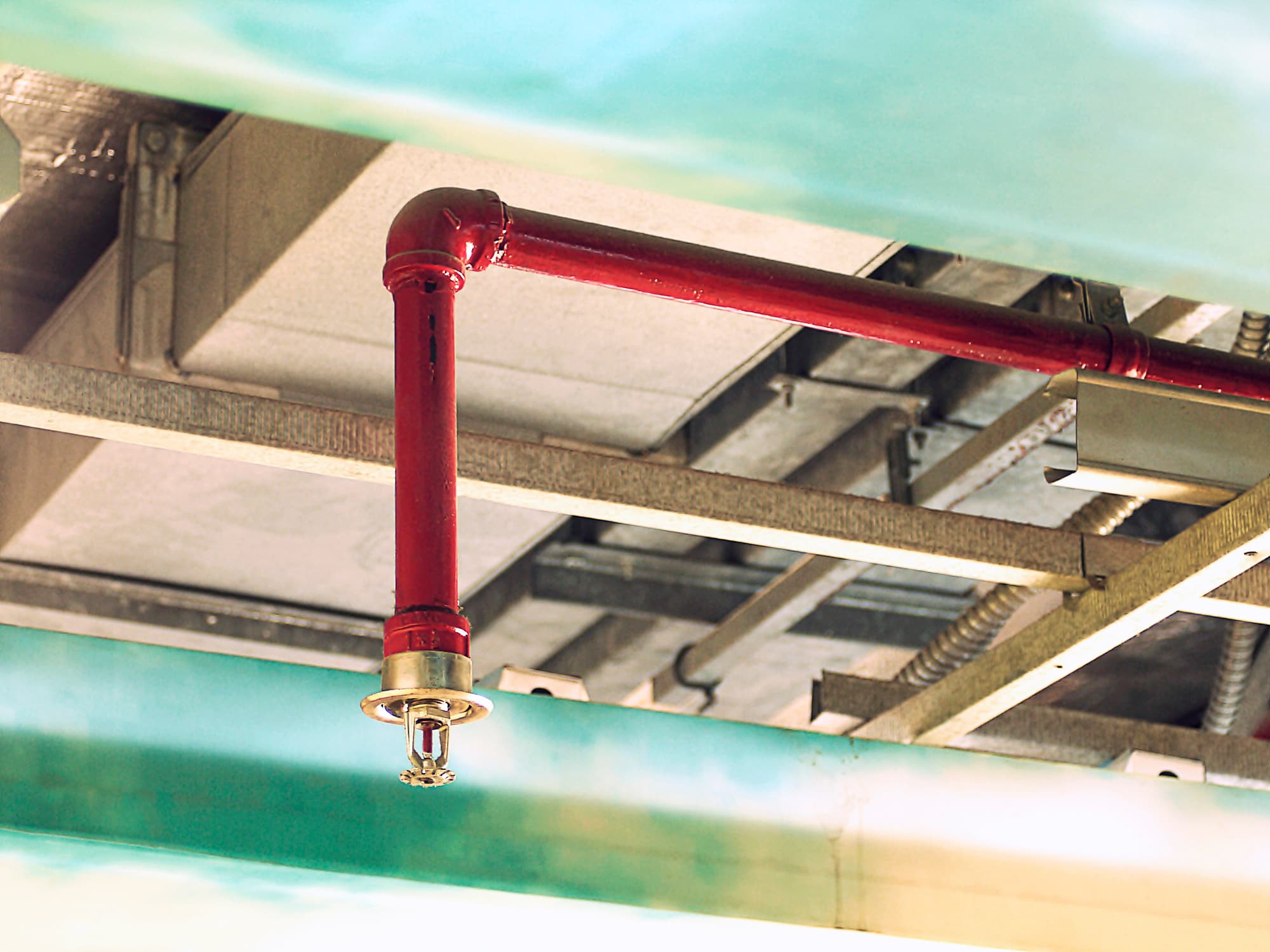Fire sprinkler systems are found in almost all commercial buildings to protect employees and customers in a fire emergency. Many may not realize that there are several types of sprinkler systems that help protect facilities. The two most common fire sprinklers are wet fire sprinkler systems and dry fire sprinkler systems.
Understanding the differences between these two systems will ensure you install the best fire sprinkler system for your building environment and unique needs. Additionally, knowing how often to test and inspect the fire sprinkler system will ensure it's performing optimally.
Wet Pipe Sprinkler Systems
In a wet pipe sprinkler system, the sprinkler heads connect to pipes that are filled with pressurized water. When a fire is detected, the sprinkler system activates automatically to extinguish the fire. It is a reliable fire sprinkler system that requires little maintenance. While it is a popular choice because of its ease of installation and optimal protection, it is not suited for all environments. Since the pipes in a wet pipe sprinkler system are always filled with water, it will not work in areas that fall below 40⁰ F.
Important considerations of a wet pipe fire sprinkler system include:
- Increased risk of potential damage to your property if there is a leaky pipe
- Lower maintenance costs
- Not ideal for spaces housing sensitive equipment
Dry Pipe Sprinkler Systems
With dry pipe sprinkler systems, the sprinkler heads connect to pipes that are filled with pressurized air or nitrogen that holds back the water. If a fire occurs, the pressure in the piping drops, and a valve opens to allow water to extinguish the fire. Dry pipe sprinkler systems are ideal for environments where temperatures drop below 40⁰ F since the pipes do not hold water. These fire safety systems are usually installed in buildings that store sensitive equipment because it can help reduce potential damage to the property. Without the worry of freezing, dry pipe sprinkler systems are best for unheated buildings, parking garages, and warehouses.
Some considerations of a dry pipe sprinkler system include:
- Higher installation cost
- Increased maintenance costs because of the complexity of the sprinkler system
- Delay of initial water delivery from the sprinkler heads
Two types of sprinkler systems that are similar to dry pipe sprinkler systems include pre-action and deluge systems.
Pre-Action Sprinkler Systems
Pre-action sprinkler systems, like dry-pipe systems, contain pressurized air or nitrogen in the pipes. However, the pressure is usually less than that used for dry pipe sprinkler systems. These types of systems are often used in areas where accidental water damage is a major concern, such as in spaces with a large quantity of electronic equipment or museums. There are three variations of pre-action systems:
Single Interlocked Pre-Action System: This pre-action system holds the water supply back with a pre-action valve that is dependent upon a supplemental fire section system. Once the fire section system is activated, the pre-action valve will automatically open. However, water will not be discharged until enough quantity of heat activates one or more sprinklers. The pressure maintained in the pipe also helps to monitor its integrity and will sound an alarm if pressure drops due to a leak in the piping system.
Double Interlocked Pre-Action System: This pre-action system features a dry pipe valve mounted on top of a pre-action valve. Water will not enter the piping system until both the supplemental detection system and sprinklers are activated. Double interlocked pre-action systems are usually found in freezer facilities to help prevent damage to the piping system caused by accidental valve operation.
Non-Interlocked Pre-Action System: The main difference with this pre-action system is that water begins to flow through it by either the activation of the supplemental detection system or the opening of a single sprinkler.
Deluge Systems
Often referred to as open sprinklers, deluge systems are used to deliver large quantities of water over specified areas over a short time. The sprinkler system is controlled by a deluge valve that allows water to enter the piping when a supplemental fire detection system is activated. The system's piping uses atmospheric pressure that allows water to be immediately discharged once it reaches each sprinkler in the system. They protect areas against quickly growing or spreading fires and are used in buildings where there are highly combustible materials or when thermal damage can occur quickly.
Determine the Best Fire Sprinkler System for Your Needs
Fire sprinkler systems are necessary to help protect your facility, employees, and assets. Understanding the various sprinkler system options can make it obvious which type is best for your building's fire protection needs.
However, if you're still unsure which fire sprinkler system will work best for your environment, or if you’re ready to begin designing and installing a fire sprinkler system, reach out to a trained fire safety technician.








